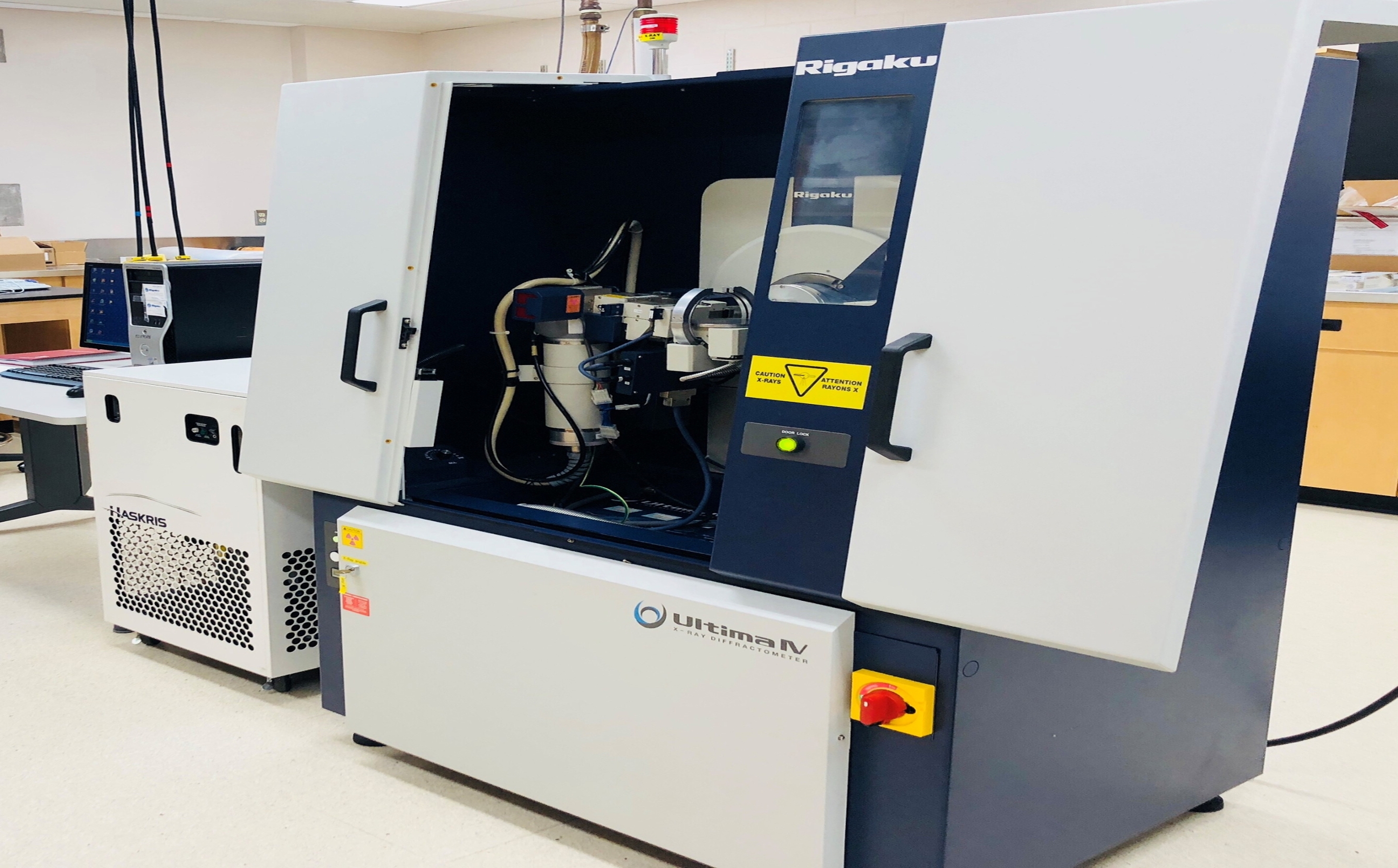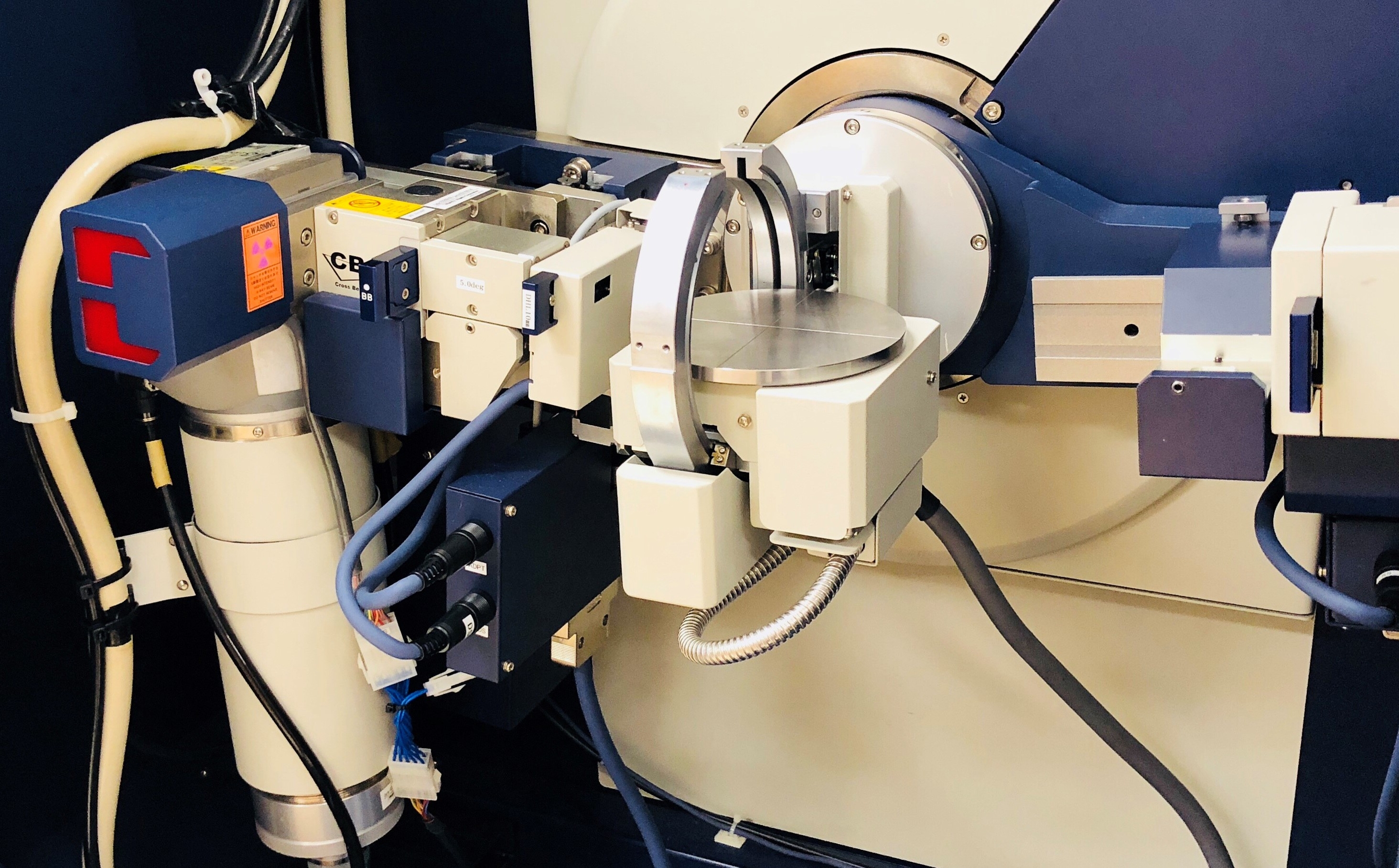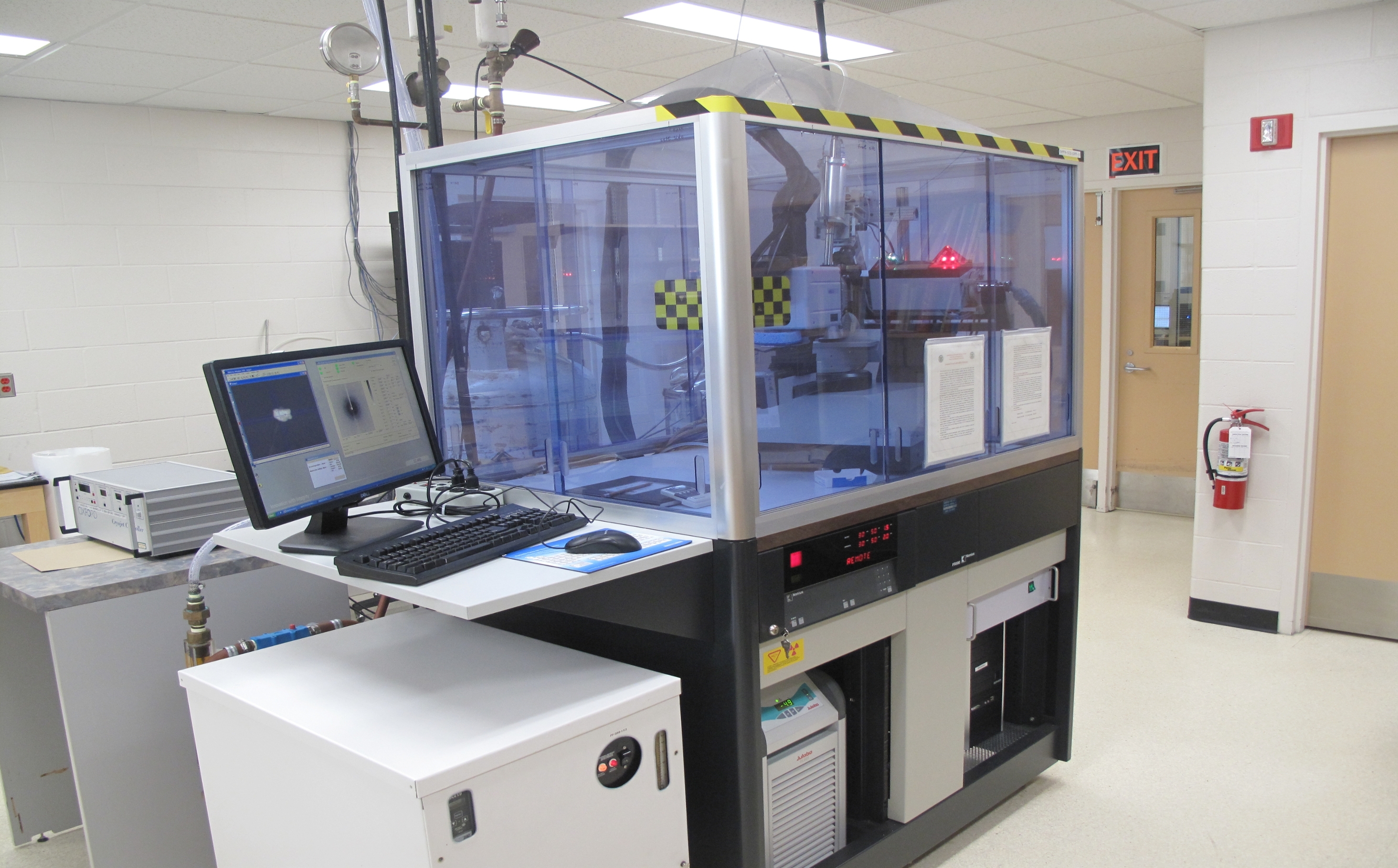X-ray Diffraction Analysis Laboratory
About the Laboratory
X-Ray Diffraction (XRD) is a non-destructive analytical technique used to obtain information about the structures/phases of crystalline materials. It has been widely applied in chemistry, nanomaterial, geology, pharmaceutical industry, glass industry, microelectronics industry, and many other fields. Depending on sample forms, there are two types of diffractometers: single crystal XRD and powder XRD. Single crystal XRD determines the molecular structure at atomic level and therefore provides information such as bond lengths, bond angles, coordination, disorder, etc. Powder XRD is primarily used to identify phases of solid state materials and has found its applications in studying, for examples:
- Crystallinity
- Polymorphs
- Phase transitions
- Sample purity
- Lattice parameters
- Crystal size and strain
Laboratory Contact
Location:
G88
Phone Number:
(306) 966-1726
Laboratory Managers:
Jianfeng (Peter) Zhu
Instruments In Lab
- Standard Attachment: conventional powder XRD.
- Automatic Sample Changer (ASC-10): 10-position auto-sampler.
- Multipurpose Attachment (MPU-4): Grazing Incidence, Pole Figure, Residual Stress, and Reflectivity measurements.
- Small Angle Attachment (SAXS): Small Angle X-ray Scattering measurement.
- Capillary Rotation Attachment: capillary size up to 2mm
- Micro Area Attachment: irradiation size 1.0 mm (width) x 1.8 mm (height).
High Temperature Attachment: temperature from RT to 1500 °C, under air or vacuum.
Training Information
For further information regarding usage and training of the instruments in this lab, please contact the laboratory manager.





